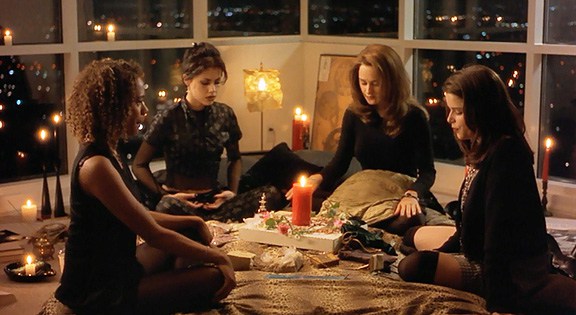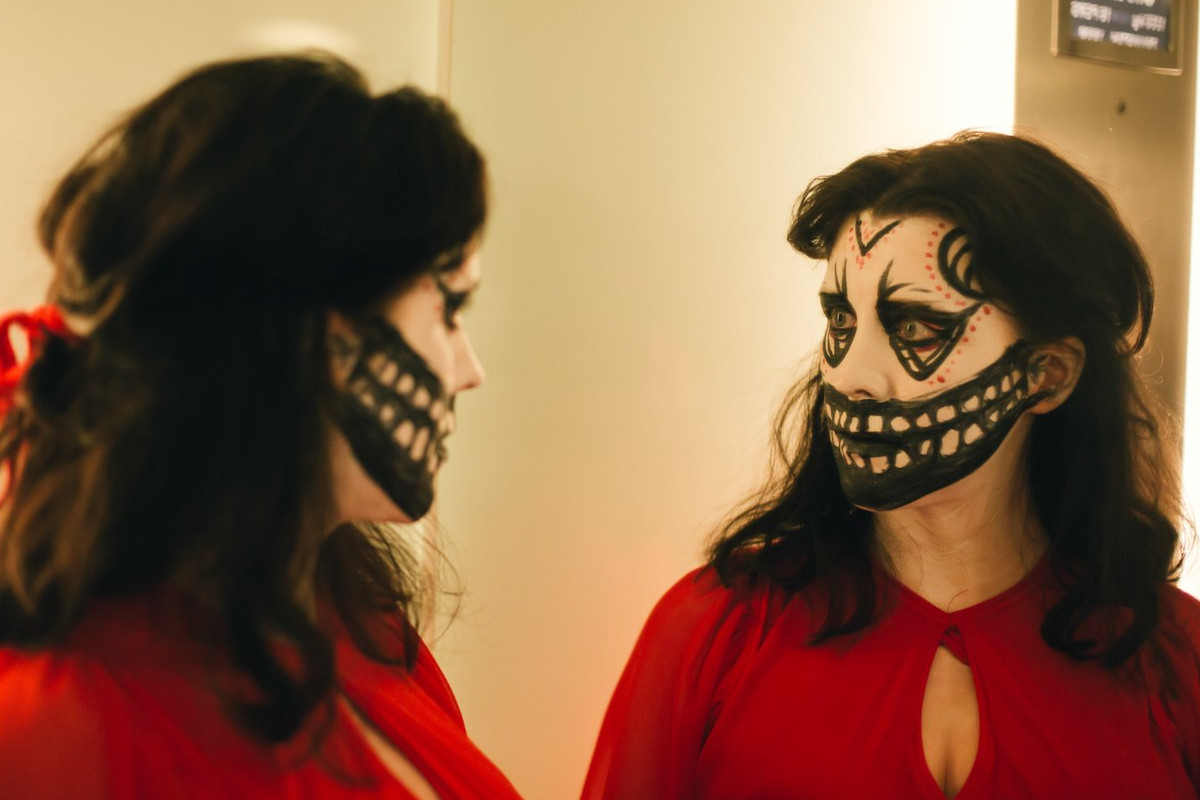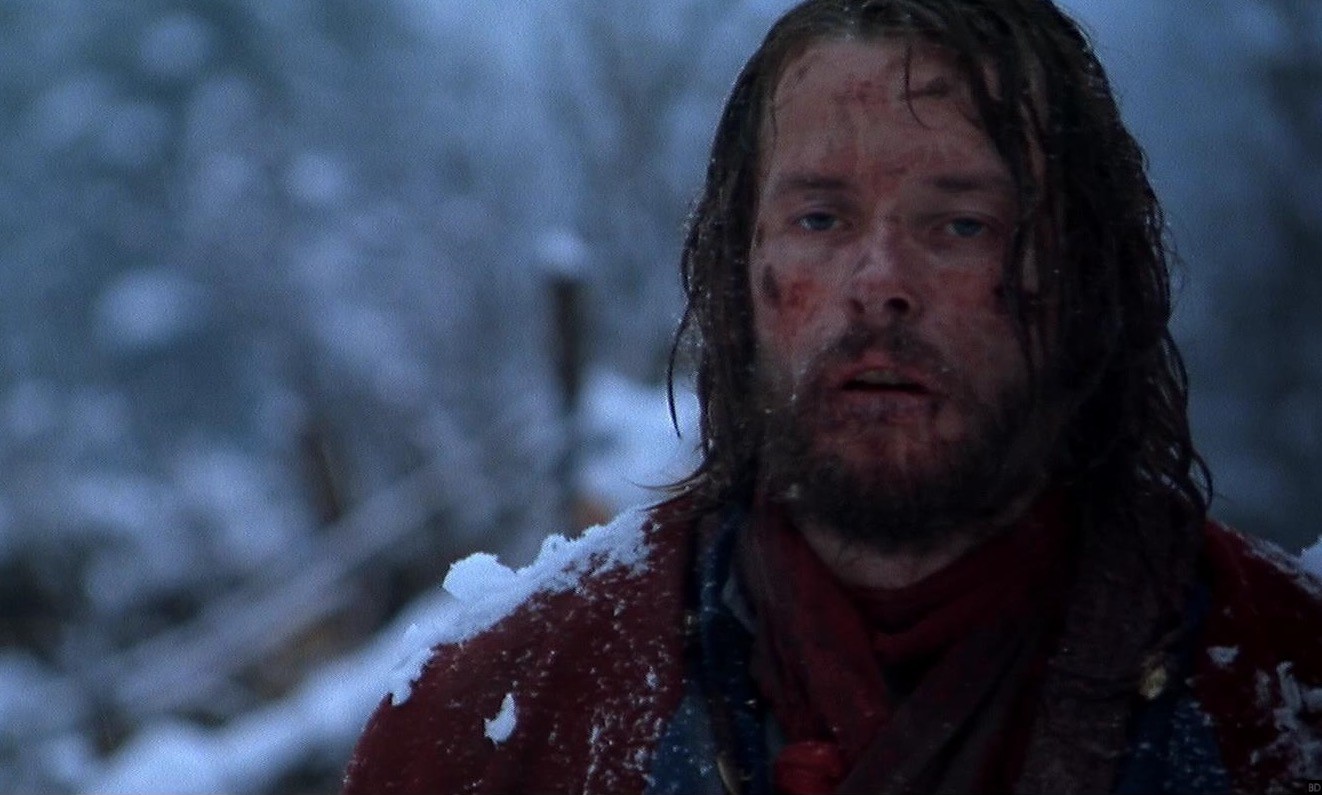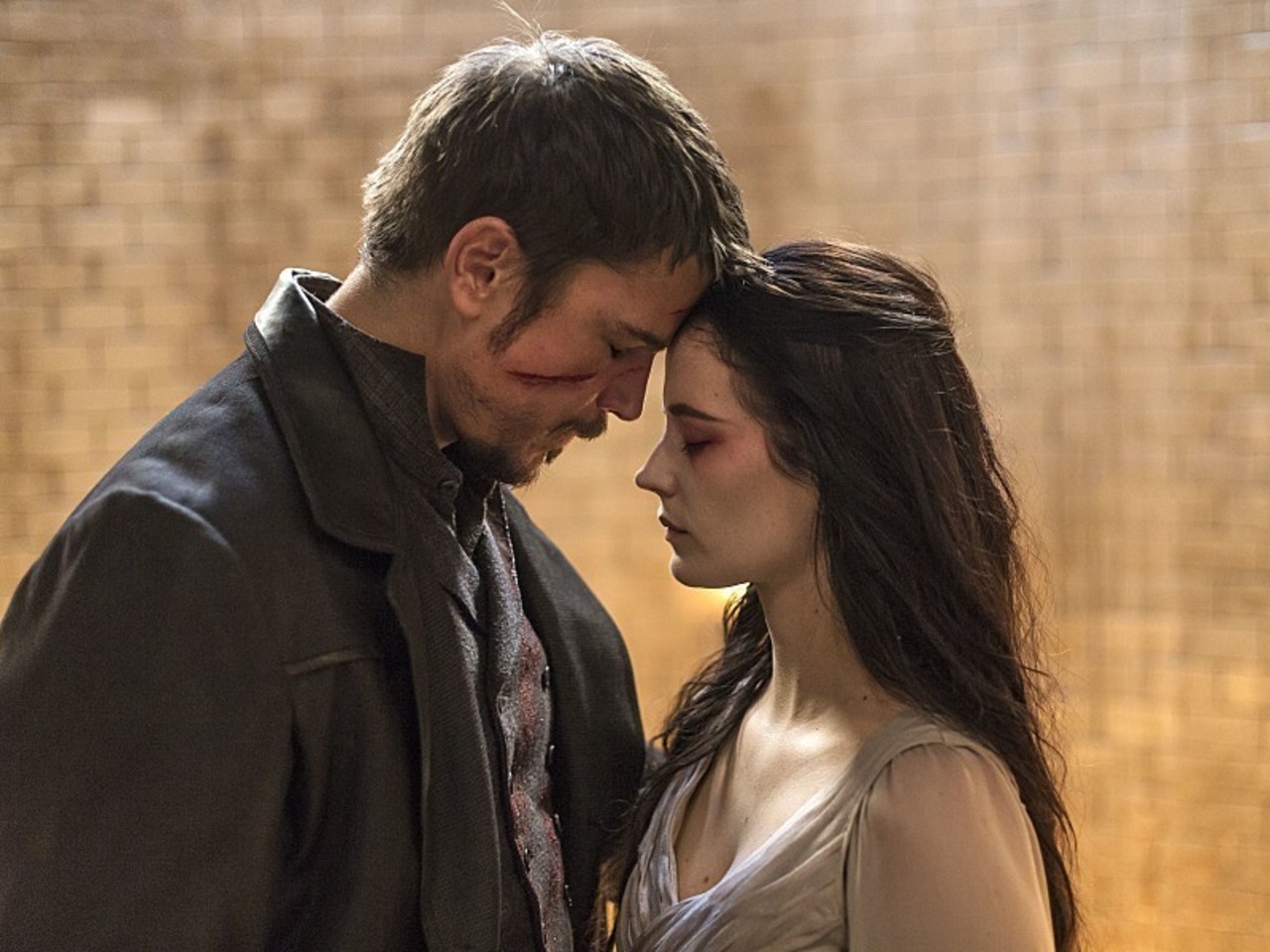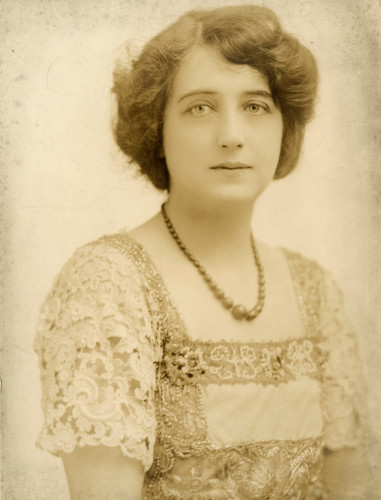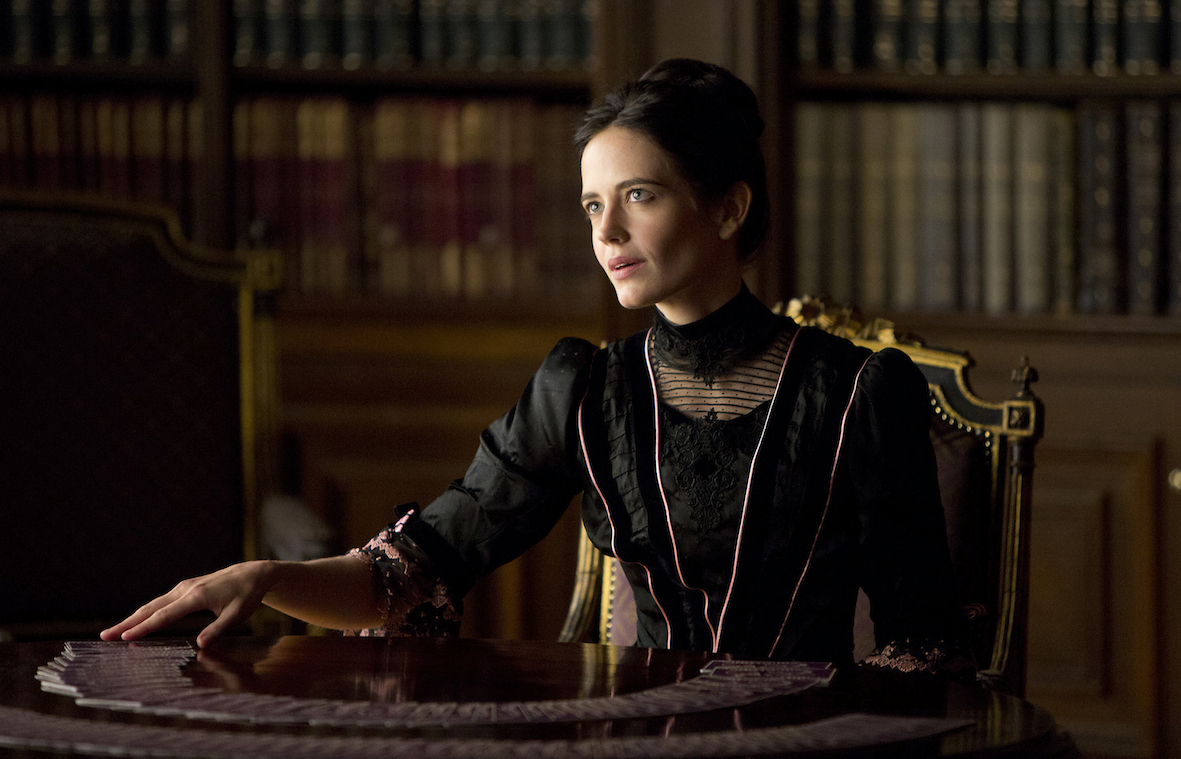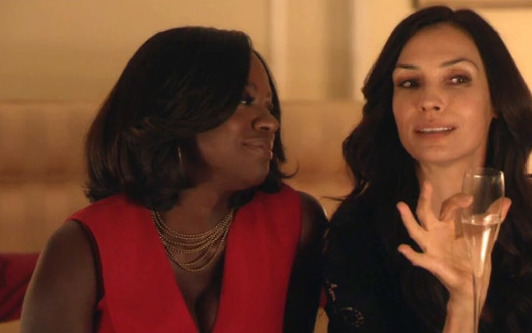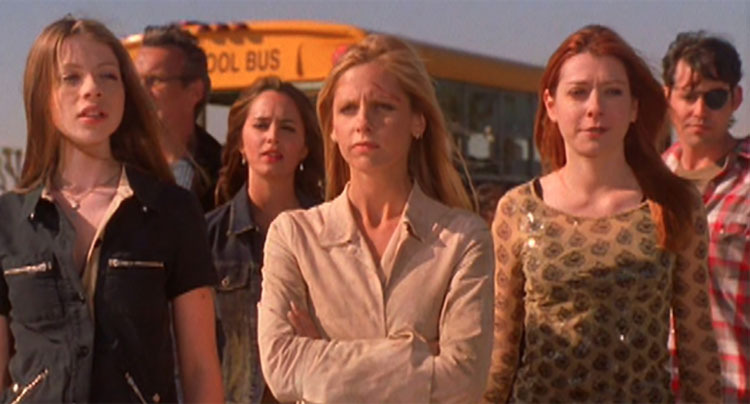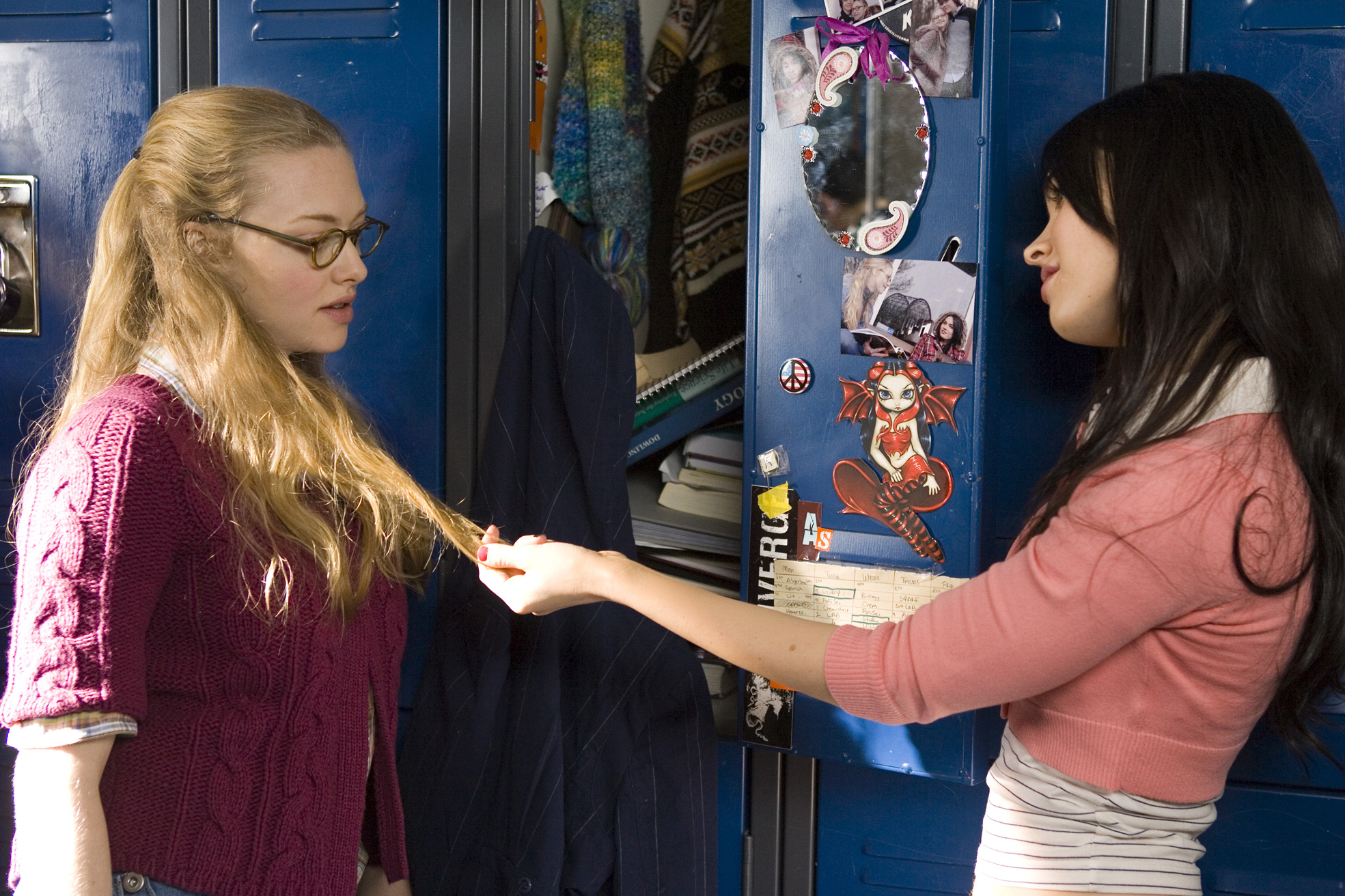This guest post written by Michelle Mastro appears as part of our theme week on Women in Horror.
The volume of films exploring the hazards of “girl world” is quite robust. Before the comedy Mean Girls there was cult classic Heathers, a darker satirical vision of teenage girl strife. Rounding out the cinematic landscape between these pillars of classic girl-on-girl warfare set in the average American high school are numerous other examples from Never Been Kissed to Jawbreaker. In fact, so hackneyed is the trope of female-centered cliques that if it isn’t treated as part and parcel of teen comedies as a genre, it is almost always at least a minor plot point. Yet horror films and television series grapple with themes inspired by catty drama and gossip as well, only the aesthetics are different to align better with their genre. In these iterations of the girl clique trope, girl gangs become covens, and the power of gossip is transformed into charms and incantations.
Swapping out girl gangs and cliques for covens is as easily done as replacing “witch” with that other not so nice pejorative term for women. In the TV series American Horror Story: Coven, for example, Fiona Goode (Jessica Lange) toys with both words, calling one of the school’s meaner pupils a “little witch bitch.” In that same episode, she takes the band of squabbling girls on a field trip through New Orleans, telling them all beforehand to “wear something black.” The show aired on Wednesdays, prompting fans to coin the phrase, “On Wednesdays we wear black,” another play on words, only this time in reference to Mean Girls. One of the frequently quoted lines from the film includes the “Plastics”’ rules about hump day association and uniformity: “On Wednesdays we wear pink.” The writers of AHS: Coven and fans alike got the joke: girls in groups can be mean — mean like witches.
This, of course, might seem like a sexist reading of girl friendships — and it would be even more understandable to question the show’s depiction of gender given how female sexuality is portrayed and its problematic depiction of race. Yet, given that women, historically, could only maintain their social status through heteronormative marriage — through their connections to men — it would make sense that the young women might begin to view each other as competition. In high school, who dates whom really matters, and thus the high schools of the films are more or less stuck in a time warp. Their cafeterias, the place of social gathering, are where romantic attachments are forged. The dining hall perfectly figures as a sort of Regency court of King George III, where marriages mattered to one’s social superiority. Social status dictated how close courtiers got to sit near the king. Terrifyingly, the king’s friendship could help produce advantageous marriages or dissolve them entirely. Thus, the more popular the girl in Mean Girls, the closer she resides near Regina George. She usually forbids more readily than she grants unions, however, and her despotic rule feeds much of the clique’s cattiness.
Which begs the question: why would these characters hang around each other at all? On the surface, each school clique offers a certain amount of protection. In AHS: Coven’s case, if the girls don’t band together, they will face assaults from outsiders. “If witches don’t fight, we burn,” says Fiona to the students. In Mean Girls (written by Tina Fey), the point of being in the Plastics is somewhat similar, though obviously not nearly as dire. For protagonist Cady Heron (Lindsay Lohan), lunchtime at the cafeteria posed as a minefield full of aggressive cliques, and not being a member of any group at first, she found herself the butt of jokes, a social outcast forced to eat alone in a women’s bathroom stall. Better to have fun at the expense of others with the Plastics in their “Burn Book” than get burned oneself. The same conclusion is proposed near the beginning of The Craft and Heathers. Sarah (Robin Tunney) in the former joins her clique more out of necessity than anything else, whereas Veronica (Winona Ryder) in the latter participates in spiteful pranks on fellow students, even though she questions the group’s methods and is quick to claim her own name in a gaggle of Heathers, stridently affirming: “I’m a Veronica.”
Underwritten in this claim of selfhood, however, is a larger message. Each of the films and the TV series, to varying degrees, promote individuality over conformity. Eventually, each teaches viewers the importance of being true to yourself and avoiding the pitfalls of group mentality.
In The Craft, when the girls catch a bus together, they all wear dark sun-glasses and nearly identical fashions, precursors of the pink Plastics and black-draped New Orleans witches, not to mention references to the shoulder-pad loving Heathers of the 1980s. Each group of young women has made their own clique, but within each group, conformity is essential. What’s worse, the supposed protection proffered by The Craft’s coven in the form of casting spells is as spiteful as participating in any girl gang gossip. Both hurt and have unforeseen consequences. Sarah learns to be careful about what energy she puts out. “Whatever you send out, you get back threefold,” she is counselled. She casts a spell to get back at football player Chris Hooker (Skeet Ulrich) for spreading lies that the pair had sex. After the spell, he becomes her lapdog, but his obsession quickly turns violent. Apparently, her intention behind the spell was wicked, and the results matched. Although Sarah was right to seek justice, her spell was framed in a way that could only elicit revenge, a much more volatile act that inflicts a cost on both parties, although this in no way means that she deserved nor brought on herself slut-shaming or attempted rape. In AHS: Coven, one of the girls, Madison (Emma Roberts), is gang raped. She uses her magic to kill the boys, but also murders an innocent guy in the process. Her actions will come back to haunt her, as all the witches’ poor decisions inevitably do. Madison becomes more and more heartless as the series progresses, symbolized by an actual heart condition preventing her from ever serving as the coven’s leader. “The only good or bad is in the heart of the witch,” Lirio (Assumpta Serna) tells the girls in The Craft. Cady in Mean Girls arrives at a similar realization. The Burn Book of the Plastics is photocopied and dispersed among the students, and Cady will have to find a way to take back her words. It is too late, of course, just like in Sarah’s case. In The Craft, Lyrio tells her: “When you open a flood gate, how can you undo it? You unleash something with a spell. There is no undoing; it must run its course.” The mistake each of the girls all made was attempting a kind of vigilante justice — really a type of revenge.
The Craft is a cult classic that impacted many women due to its representation and messages of empowerment and “taking back the threat of female power.” In the oral history of The Craft at Entertainment Weekly, producer Douglas Wick said he “was curious about the phenomenon of girls marginalized in a man’s world who suddenly come into their sexuality and have this enormous power.” Actress Robin Tunney said, “Somehow it still speaks to everybody’s inner teenage girl.” In her Vulture article on The Craft‘s legacy, Angelica Jade Bastien writes:
“Witchcraft is more than mere teenage rebellion for these young girls. It’s a means to attain what at first glance appears unattainable: power, control, autonomy, the ability to live beyond the various oppressive forces that govern their lives. […] These girls, each in their own way, is calling out for something women learn early and often is hard to attain: the power to control your own life.”
Yet the girls’ friendship ultimately turns toxic and destructive, demanding conformity over individuality.
Sarah, Veronica, Cady, and the girls from AHS: Coven learn painful lessons. Words and spells cannot be taken back and cannot be undone, and the girls prove more powerful in their individuality. In The Craft, Sarah realizes her friends’ coven is organized more like a petty club and her fellow witches are just as spiteful as the young women and men they sought vengeance against. Veronica realizes she cannot undue the harm she has caused; she cannot bring back the kids she helped to murder. And Cady learns that being “personally victimized by Regina George” does not give her license to become another queen bee. Each of the protagonists find strength in themselves. Sarah is called a natural witch, for unlike the other girls, her “power comes from within.” After Sarah’s coven disperses, all the girls lose their magical powers except Sarah. Veronica and Cady, meanwhile, end their films with the promise of never allowing any future cliques to form in their respective high schools ever again. Or at the very least, they won’t conform to what others say; they will listen to their own moral compass. In AHS: Coven, the ruling mean girls Madison and Fiona have been ousted as well. And the rise of a new headmistress, Cordelia (Sarah Paulson) brings with her the promise of beginning the school afresh. Past mistakes will not be repeated, she informs the press, revealing the school to the world.
In this way, each manifestation of the girl group trope proposes an affirmation of self-esteem, non-conformity, independence, and individuality. The chilling and ominous tales about teenage witches invoke and summon the moral of their comedic cousins, warning female viewers against resentment and revenge, while encouraging them to always “do unto others as they would have done unto them.” What might seem like an allusion to Christian doctrine is, in fact, the basis of many beliefs, even Wiccan practices. “[I]t’s part of a basic spiritual truth. Said in many ways in many faiths,” Lirio says matter-of-factly. Spells, like gossip, will come back “threefold.”
See also at Bitch Flicks:
Girl Gangs Are Mean: Teenage Girl Gang Movies Through the Years
20 Years of The Craft: Why We Needed More of Rochelle
Exploring Bodily Autonomy on American Horror Story: Coven
I’m a Veronica: Power and Transformation Through Female Friendships in Heathers
Veronica Decides Not to Die — Heathers: The Proto-Mean Girls
How Should a Show about Witches Be?
Michelle Mastro is a graduate student at Indiana University, Bloomington’s English PhD program. She loves all things horror, and to her, autumn is the greatest season not just for Starbucks pumpkin spice but for the availability of horror film marathons on TV — of which she watches plenty.
